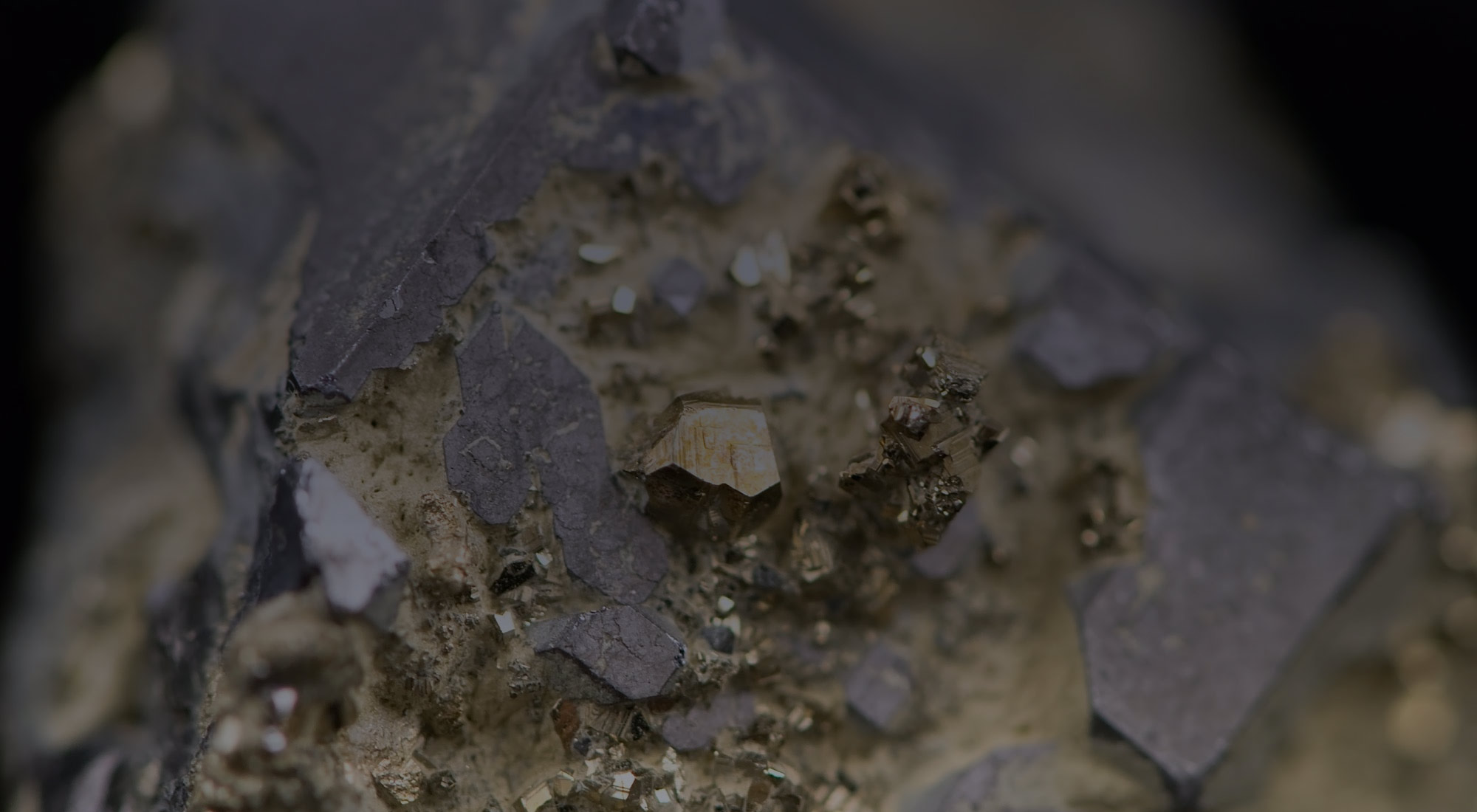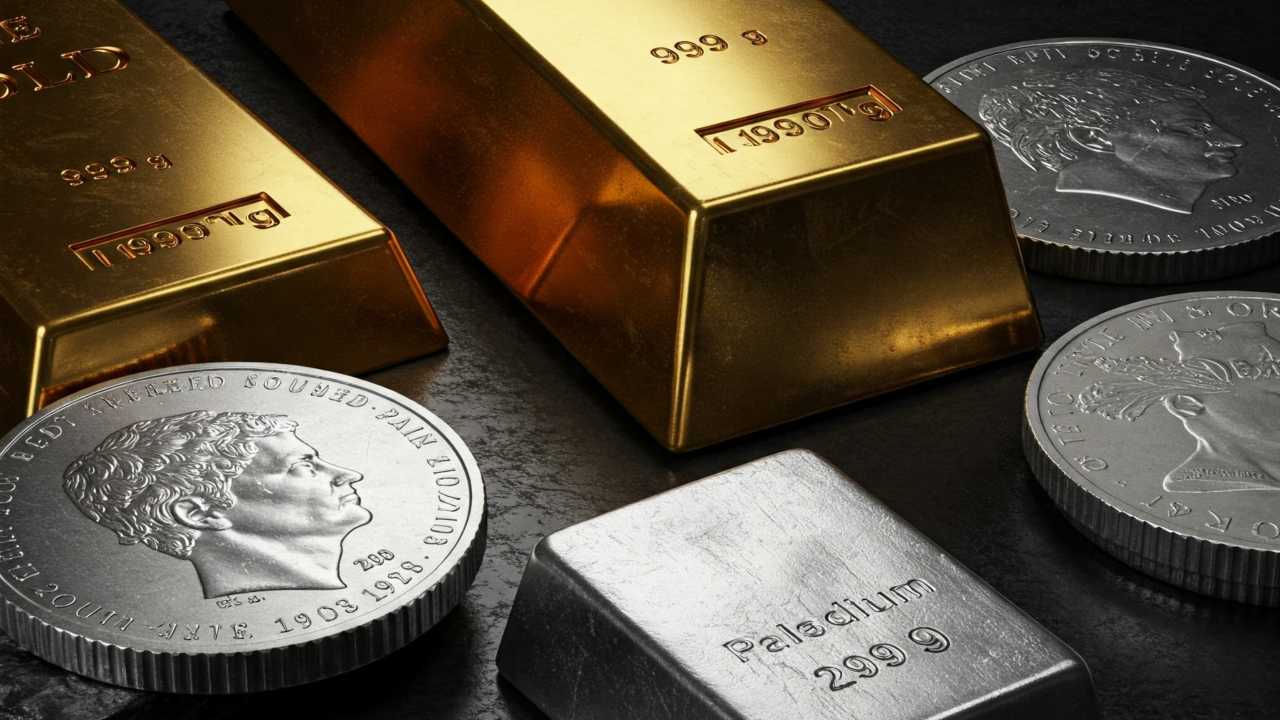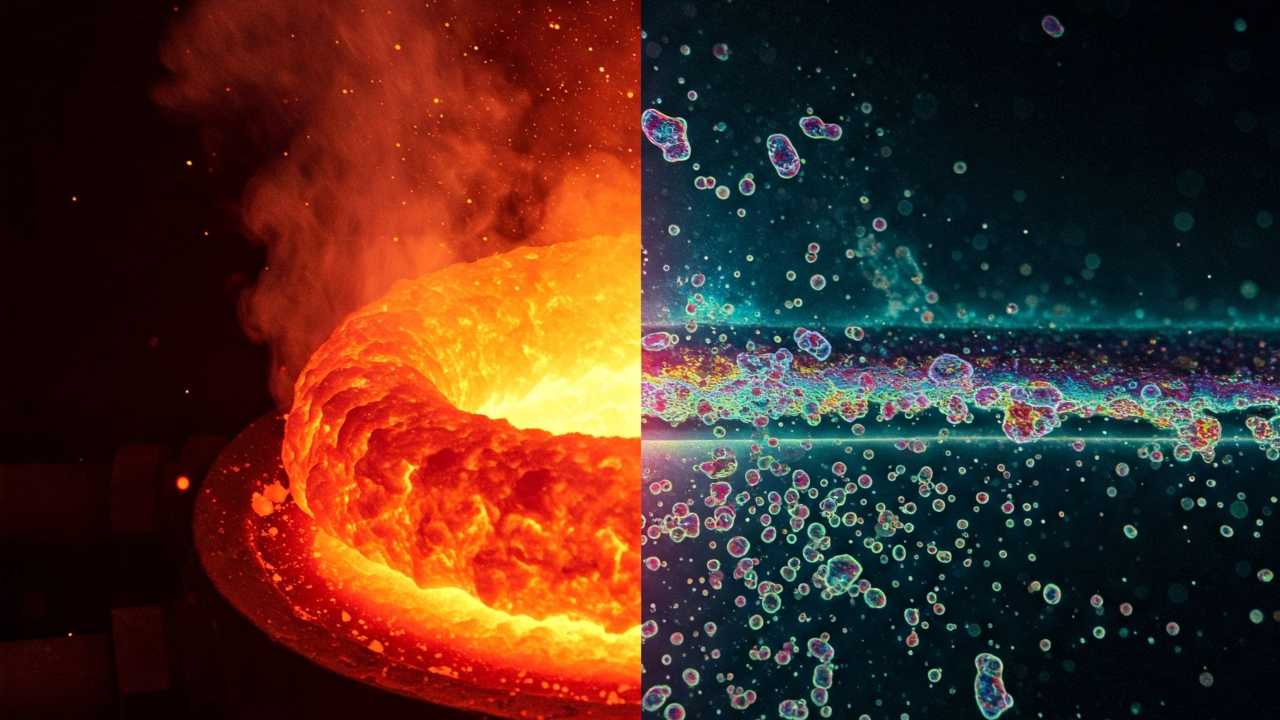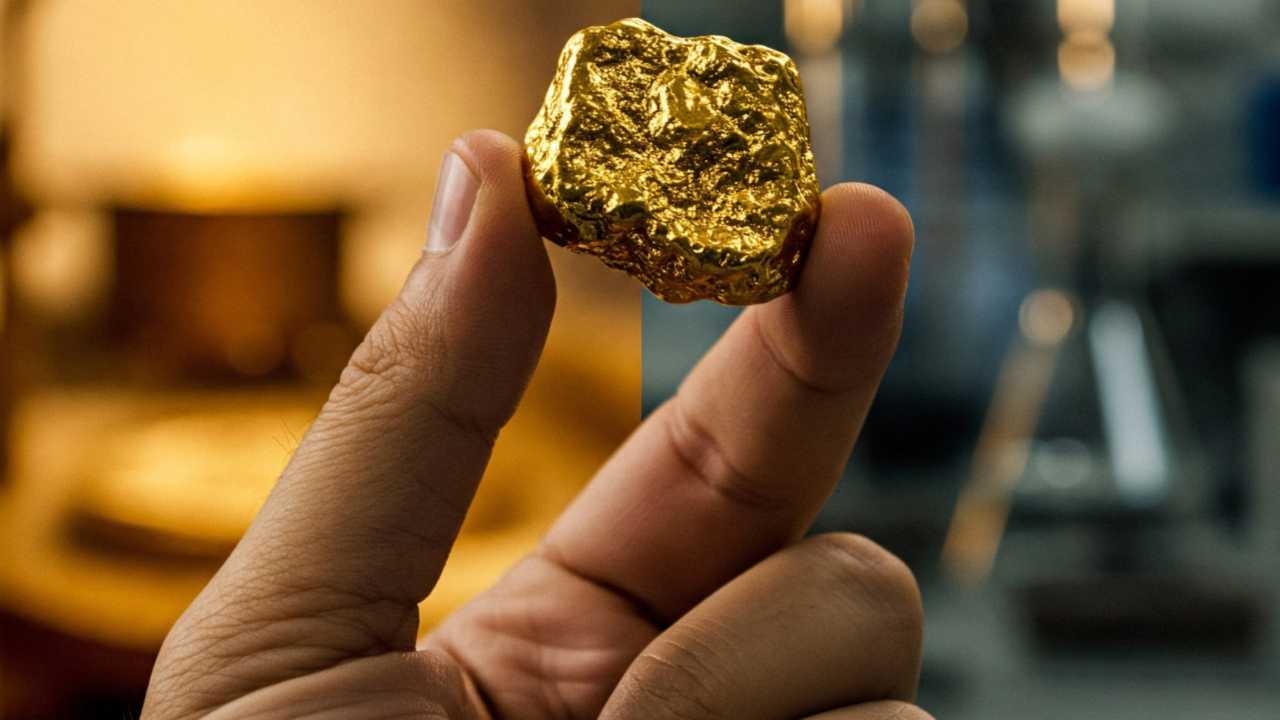The Crucible of Purity: A Technical Dive into the Role of Temperature in Metal Processing
Metal purity is not merely a desirable attribute; it is the bedrock upon which the performance, reliability, and functionality of countless modern technologies are built.
From the microscopic transistors in our smartphones requiring ultra-high purity silicon or copper, to the high-temperature superalloys in jet engines demanding precise control of trace elements, the presence and state of impurities dictate mechanical strength, electrical conductivity, corrosion resistance, optical properties, and even magnetic behavior.
Achieving and maintaining this purity is a complex dance involving a multitude of processing steps, and at the heart of almost every one lies a critical, often decisive, parameter: temperature.
Temperature is far more than just a dial to be adjusted; it is the thermodynamic and kinetic engine driving the physical and chemical transformations that define a metal’s journey from raw ore to finished product.
Its influence on impurity behavior is multifaceted, affecting solubility, diffusion rates, reaction equilibria, phase transitions, and the formation and morphology of defects.
This article undertakes a technical dive into the pervasive role of temperature across the lifecycle of metals, from primary extraction and refining through solidification and subsequent thermal processing, demonstrating why its precise control is paramount in the relentless pursuit of purity.
Fundamentals: Temperature as the Arbiter of Atomic Behavior
To understand temperature’s impact on purity, we must first revisit fundamental materials science principles:
-
Thermodynamics and Solubility: The solubility of an impurity element in a metallic matrix is fundamentally governed by thermodynamics, specifically the change in Gibbs Free Energy () upon dissolution. , where is the enthalpy change, is the absolute temperature, and is the entropy change. Temperature () plays a direct role in this equation. For many impurities, solubility increases with increasing temperature (though exceptions exist). This is because higher thermal energy can more easily overcome the energy barriers () to incorporate the impurity atom into the lattice or liquid structure, and the increased disorder associated with dissolved impurities contributes positively to the entropy term (). Phase diagrams (e.g., binary or ternary systems depicting temperature vs. composition) are indispensable tools for visualizing solubility limits (solvus lines) and the equilibrium phases present at different temperatures. Understanding these diagrams allows prediction of when an impurity will be dissolved in the matrix, or when it will precipitate out as a separate phase, form an intermetallic compound, or segregate to grain boundaries or phase interfaces – all states that profoundly impact material properties.
-
Kinetics and Diffusion: While thermodynamics dictates what is possible at a given temperature (e.g., whether an impurity can dissolve or precipitate), kinetics determines how fast these processes occur. Temperature is the primary driver of atomic mobility. Diffusion, the movement of atoms within a material, follows an Arrhenius relationship: , where is the diffusion coefficient, is a pre-exponential factor, is the activation energy for diffusion, is the gas constant,1 and is the absolute temperature.2 The exponential dependence on temperature means that diffusion rates increase dramatically with rising temperature. This has profound implications for:
- Homogenization: Reducing compositional variations (like impurity segregation) by allowing atoms to diffuse and mix. Higher temperatures accelerate this.
- Precipitation/Dissolution: Atoms must diffuse to nucleation sites to form precipitates, or diffuse away from dissolving particles into the matrix. Temperature controls these rates.
- Segregation: Impurity atoms moving to lower energy sites like grain boundaries or interfaces. Diffusion facilitates this.
-
Phase Transformations: Temperature changes trigger phase transformations (melting, solidification, solid-state phase changes). Impurities often behave differently in different phases. For instance, the partition coefficient (), the ratio of impurity concentration in the solid phase to that in the liquid phase at equilibrium, is highly dependent on the specific impurity-metal system and the temperature at the solid-liquid interface. This coefficient dictates how impurities are redistributed during solidification, a process directly controlled by the temperature profile.
Temperature in Primary Metal Production: Unlocking and Refining Purity
The journey of a metal begins with the extraction of desirable elements from their ores, often locked within complex chemical compounds. These processes overwhelmingly rely on high temperatures to break chemical bonds and facilitate physical separation. Subsequent refining steps, aiming to remove unwanted elements, also lean heavily on thermal processes.
-
Extraction (Smelting and Reduction):
- High Temperatures for Reaction: Smelting, the process of applying heat to ore in the presence of a chemical reducing agent (like carbon), requires temperatures high enough to overcome the activation energy for the reduction reactions and provide the necessary energy for endothermic reactions. For iron production in a blast furnace, temperatures reach over 2000°C at the tuyeres. These temperatures are essential to reduce iron oxides to metallic iron.
- Slag Formation: A critical aspect of smelting is the formation of slag, a molten mixture of impurities (like silicates, aluminates, and oxides) that is less dense than the molten metal and immiscible with it. Temperature control is crucial for:
- Ensuring the slag is fully molten and fluid enough to separate effectively from the metal.
- Controlling slag chemistry and viscosity to selectively absorb specific impurities (e.g., sulfur in iron smelting). Higher temperatures can influence the solubility of certain impurities in the slag phase.
- Volatilization: High temperatures can volatilize certain impurities with high vapor pressures (e.g., zinc, lead, sulfur). Controlling the temperature and atmosphere can facilitate their removal in gaseous form.
- Example: Aluminum Production: While electrolytic reduction operates at lower temperatures than iron smelting (around 950-1000°C for the cryolite bath), maintaining this precise temperature is critical for the efficiency of the electrochemical reaction and preventing the electrolyte from freezing or overheating, which would impact the purity of the deposited aluminum. Impurities in the alumina feed and the anode material can also behave differently at slightly varying temperatures.
-
Refining: Once extracted, the crude metal often contains significant levels of impurities. Refining processes utilize temperature in sophisticated ways to enhance purity.
- Pyrometallurgical Refining: These are high-temperature processes.
- Vacuum Induction Melting (VIM): Melting metal in a vacuum at high temperatures is effective for removing impurities with high vapor pressures (e.g., hydrogen, nitrogen, oxygen, certain trace metals like Mg, Ca, Zn). The high temperature increases the vapor pressure of these elements, and the vacuum lowers the ambient pressure, driving their evaporation from the melt. Precise temperature control is needed to ensure efficient impurity removal without excessive evaporation of the base metal or desirable alloying elements.
- Zone Refining: Perhaps one of the most elegant examples of temperature-driven purity. A narrow molten zone is created in a solid rod of impure material and slowly moved along its length. Impurities with a partition coefficient (meaning they are less soluble in the solid than the liquid) are preferentially swept into the liquid zone and carried to one end of the rod. Conversely, impurities with are left behind in the solidified region. The efficiency of separation is highly dependent on the precise temperature profile at the solid-liquid interface, the width of the molten zone, and the rate of zone movement. Multiple passes can achieve exceptionally high purity, particularly for semiconductors like silicon and germanium.
- Electron Beam Melting (EBM): Similar to VIM, EBM uses a focused electron beam to melt material in a high vacuum. The extremely high temperatures achievable and the vacuum environment make it highly effective for removing refractory impurities and gases, yielding very high purity metals like titanium or niobium. Careful control of beam power and scan speed dictates the melt pool temperature and hence the efficiency of volatilization.
- Electrolytic Refining: While operating at lower temperatures than pyrometallurgical methods (typically below the melting point of the metal, often in aqueous solutions), temperature still plays a vital role. In copper refining, for instance, maintaining the electrolyte bath at a specific temperature (e.g., 60-70°C) is crucial for:
- Optimizing the conductivity of the electrolyte.
- Controlling the kinetics of the dissolution of the impure anode and the deposition of pure copper at the cathode.
- Influencing the morphology of the deposited copper (avoiding powdery or rough deposits that can trap impurities).
- Affecting the solubility of impurities in the electrolyte. Impurities that do not dissolve or precipitate as slimes at the bottom of the cell contribute to purification.
- Pyrometallurgical Refining: These are high-temperature processes.
Temperature During Solidification: The Critical Transition
The transition from liquid to solid is a pivotal stage where the fate of dissolved impurities is largely sealed. The way a metal solidifies, driven entirely by the temperature profile, dictates the distribution and form of impurities in the final solid structure.
-
Partitioning and Segregation: As the solidification front advances, impurities tend to partition between the solid and liquid phases according to the partition coefficient (). If , the impurity is rejected into the remaining liquid; if , it is preferentially incorporated into the solid. The rate of cooling and the temperature gradients present during solidification significantly influence the effectiveness of this partitioning.
- Equilibrium Solidification: Under infinitely slow cooling, the solid composition would follow the solidus line and the liquid the liquidus line on the phase diagram, with uniform composition in each phase. This is an ideal never truly achieved.
- Non-Equilibrium Solidification: Real-world solidification involves finite cooling rates. This leads to segregation, where the impurity concentration varies within the solidified structure.
- Macrosegregation: Large-scale variations across the casting (e.g., center richer in impurities than the edges). Influenced by convection currents in the liquid and bulk temperature gradients.
- Microsegregation: Variations on a finer scale, particularly between the centers of dendrites (primary solidified arms) and the interdendritic regions (the last liquid to solidify). Impurities with are pushed ahead of the solidifying interface, concentrating in the interdendritic spaces.
- Temperature’s Role: The cooling rate dictates the speed of the solidification front. Faster cooling rates lead to less time for diffusion in the solid, exacerbating microsegregation. Temperature gradients influence the shape of the solidification front (planar, cellular, dendritic). Dendritic growth, common in most castings, inherently leads to microsegregation. Controlled directional solidification, where temperature gradients are carefully manipulated to make the solidification front move uniformly in one direction, is used in applications like gas turbine blades to minimize segregation and create desirable single-crystal or directionally solidified structures with improved high-temperature properties, partly due to better control over where residual impurities/alloying elements end up.
-
Inclusion Formation: Many impurities react with the molten metal or with each other to form solid particles called inclusions (e.g., oxides, sulfides, nitrides).
- Solubility Dependence: The solubility of elements like oxygen, sulfur, or nitrogen in molten metal is temperature-dependent. As the metal cools towards solidification, the solubility decreases, leading to precipitation of these compounds.
- Nucleation and Growth: Temperature influences the nucleation rate (formation of new inclusion particles) and growth rate of these inclusions. Rapid cooling can lead to finer, more dispersed inclusions, while slow cooling can result in fewer, larger inclusions. Both size and distribution significantly impact mechanical properties.
- Deoxidation/Desulfurization: High-temperature additions of reactive elements (like aluminum, silicon, or calcium) are common in steelmaking to react with dissolved oxygen or sulfur before solidification, forming stable oxides or sulfides that can float out into the slag. The efficiency of these reactions is highly temperature-dependent.
Temperature in Secondary Processing: Refining the Solid State
Even after solidification, temperature remains a critical tool for manipulating the state and distribution of impurities within the solid metal. Heat treatments are employed to improve properties, often by altering the microstructure and the location/form of impurity or alloying elements.
-
Homogenization: Cast structures are often prone to microsegregation. Homogenization involves holding the solid metal at a high temperature (below the solidus) for an extended period. The high temperature dramatically increases diffusion rates, allowing impurity atoms concentrated in segregated regions to diffuse into the depleted areas, resulting in a more uniform composition. The effectiveness and duration of homogenization are directly tied to temperature and the diffusion coefficients at that temperature.
-
Solution Treatment: For alloys designed for precipitation strengthening (where controlled precipitation of a second phase enhances strength), the first step is typically solution treatment. The alloy is heated to a temperature where the alloying elements (which can be considered beneficial “impurities” in a binary sense, or where actual impurities might also be involved) dissolve completely into the solid matrix, forming a single solid solution phase. This requires heating above the solvus line on the phase diagram. Precise temperature control is vital: too low and dissolution is incomplete; too high and incipient melting or excessive grain growth can occur.
-
Precipitation Hardening (Aging): After solution treatment and quenching, the alloy is heated to an intermediate temperature (aging temperature). At this temperature, the supersaturated solid solution becomes unstable, and the alloying elements precipitate out as finely dispersed particles. The temperature and duration of aging control the size, shape, and distribution of these precipitates, which in turn dictate the strength and other properties. Impurities can sometimes act as nucleation sites for these precipitates or form their own undesirable precipitates, and their behavior during aging is also temperature-dependent.
-
Annealing: Various annealing processes involve heating to specific temperatures to relieve internal stresses, recrystallize deformed grains, or coarsen microstructures. While not always directly aimed at impurity removal, annealing temperatures influence the mobility of impurity atoms and their tendency to segregate to new grain boundaries formed during recrystallization or coarsen within the matrix. For instance, spheroidizing annealing of steel involves holding at high temperatures to coarsen cementite (iron carbide) particles, improving machinability, and this process is entirely temperature-controlled.
Case Studies: Temperature’s Purity Power in Action
The impact of temperature control on purity is vividly illustrated in the production of high-performance and high-tech materials:
-
Semiconductor-Grade Silicon: The semiconductor industry demands silicon with impurity levels in the parts per trillion range. Zone refining, discussed earlier, is a critical step. The extreme purity achieved is a direct result of the precise temperature control and the repeated application of the temperature gradient to sweep impurities. The Czochralski process, used to grow large single crystals, also involves maintaining a silicon melt at a precise temperature (just above the melting point) and controlling the temperature gradients at the solid-liquid interface during crystal pulling to minimize the incorporation of impurities from the melt and the crucible. Oxygen and carbon picked up from the crucible are particularly sensitive to melt temperature and convection.
-
Aerospace Superalloys: Nickel- and cobalt-based superalloys used in gas turbine engines operate at extremely high temperatures, close to their melting points. Their performance is exquisitely sensitive to the presence and location of trace elements (impurities) and the controlled precipitation of strengthening phases like . Vacuum melting techniques (VIM, VAR – Vacuum Arc Remelting, ESR – Electroslag Remelting) utilize high temperatures and vacuum/controlled atmospheres to reduce interstitial impurities (O, N, C) and control the levels of detrimental trace elements (like S, P, Pb, Sn, As). Directional solidification and single-crystal growth techniques, which rely on precisely controlled temperature gradients, are employed to eliminate grain boundaries (preferential impurity segregation sites) and optimize the orientation of the strengthening precipitates.
-
High-Purity Copper: Electrolytic refining is the standard for producing high-purity copper (). As discussed, maintaining the correct electrolyte temperature is essential for efficient dissolution of the impure anode, effective transport of ions, and deposition of high-purity copper at the cathode while ensuring impurities with lower electrochemical potential remain in solution or fall as anode slimes.
Challenges and Future Directions
Despite the advanced control achieved in many processes, challenges remain in leveraging temperature for ultimate purity:
- Energy Consumption: Many high-temperature processes are energy-intensive, driving research into more energy-efficient purification methods.
- Refractory Containment: Handling molten metals at extremely high temperatures requires specialized refractory materials. Interactions between the melt and the refractory can introduce impurities, a challenge that requires careful material selection and temperature management to minimize dissolution or reaction.
- Complex Systems: Predicting and controlling impurity behavior in multi-component alloys at various temperatures is complex, often requiring sophisticated thermodynamic and kinetic modeling.
- Ultra-Trace Analysis: Verifying ultra-high purity requires analytical techniques capable of detecting elements at parts-per-billion or trillion levels, sometimes requiring sample preparation steps that themselves involve temperature.
Future directions will likely involve:
- Advanced Modeling: Utilizing computational thermodynamics (CALPHAD) and kinetic simulations to predict impurity segregation, precipitation, and volatilization under different temperature profiles, enabling optimized process design.
- In-Situ Monitoring: Developing real-time sensors to monitor melt temperature, composition, and impurity levels during high-temperature processes for dynamic control.
- Novel Processing: Exploring new techniques like additive manufacturing (3D printing), where the localized, rapid thermal cycles present unique challenges and opportunities for controlling impurity distribution. Understanding how parameters like laser power, scan speed, and layer thickness affect the melt pool temperature and solidification rate is crucial for controlling microstructure and impurity segregation in printed metals.
- Lower Temperature Approaches: While high temperature is often necessary, research continues into lower-temperature refining methods (like advanced hydrometallurgy or electrochemical techniques in non-aqueous systems) where feasible for specific metals and impurities.
Final Thoughts
Temperature is not merely a supporting player in the drama of metal processing; it is a central protagonist, the silent conductor orchestrating the complex atomic movements and phase transformations that ultimately determine a metal’s purity.
From the fiery furnaces of primary extraction and the controlled gradients of sophisticated refining techniques to the precise thermal cycles of solidification and solid-state heat treatments, temperature dictates the solubility, diffusion, reaction, and segregation behavior of impurities at every turn.
Mastery of temperature control is therefore not just a technical skill but a fundamental pillar of materials science and engineering.
As the demands for higher performance and more reliable materials continue to grow, the ability to precisely manipulate temperature to eliminate, control, and understand the state of impurities will remain at the forefront of metallurgical innovation, pushing the boundaries of what is possible with metals. The crucible of purity is, in essence, a crucible of precisely controlled temperature.








